#Prospector and his dog by Chuck Buchanan
Text




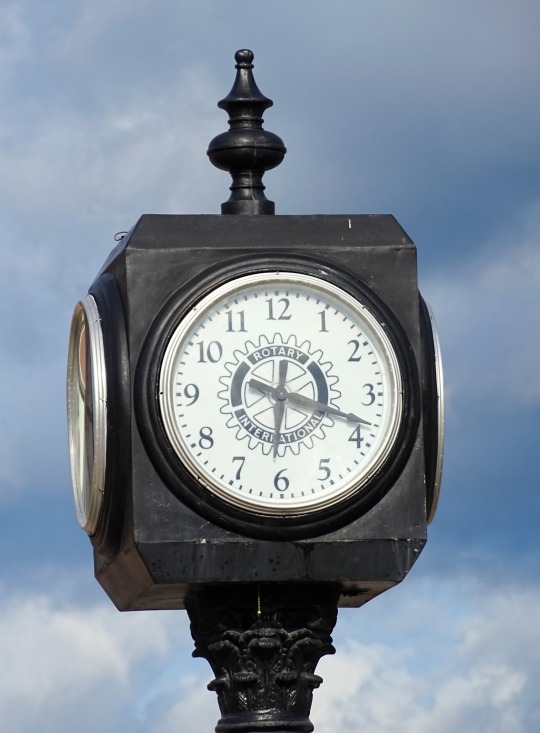





Whitehorse, YT (No. 1)
Whitehorse is the capital of the Yukon, and the largest city in Northern Canada. It was incorporated in 1950 and is located at kilometre 1426 (Historic Mile 918) on the Alaska Highway in southern Yukon. Whitehorse's downtown and Riverdale areas occupy both shores of the Yukon River, which rises in British Columbia and meets the Bering Sea in Alaska. The city was named after the White Horse Rapids for their resemblance to the mane of a white horse, near Miles Canyon, before the river was dammed.
Because of the city's location in the Whitehorse valley and relative proximity to the Pacific Ocean, the climate is milder than comparable northern communities such as Yellowknife. At this latitude, winter days are short and summer days have up to about 19 hours of daylight. Whitehorse, as reported by Guinness World Records, is the city with the least air pollution in the world.
As of the 2021 Canadian census, the population was 28,201 within city boundaries and 31,913 in the census agglomeration. These figures represent approximately 70 and 79 percent, respectively, of the entire population of Yukon.
Source: Wikipedia
#Taylor House#Hougen Centre#Prospector and his dog by Chuck Buchanan#Main Street#Whitehorse#Yukon#the North#travel#original photography#vacation#tourist attraction#landmark#cityscape#architecture#public art#sculpture#Canada#summer 2023#street scene#clock#downtown
3 notes
·
View notes
Text
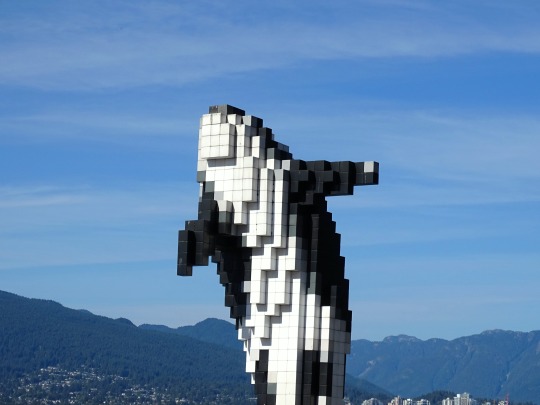
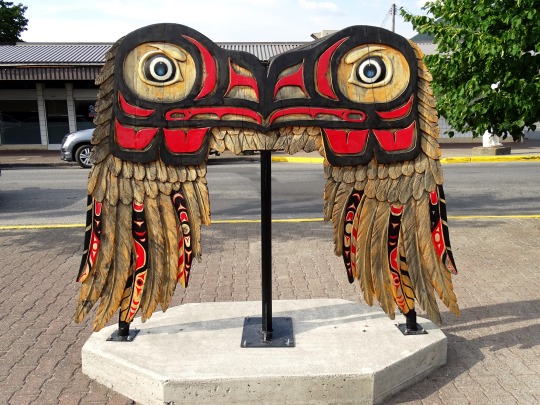
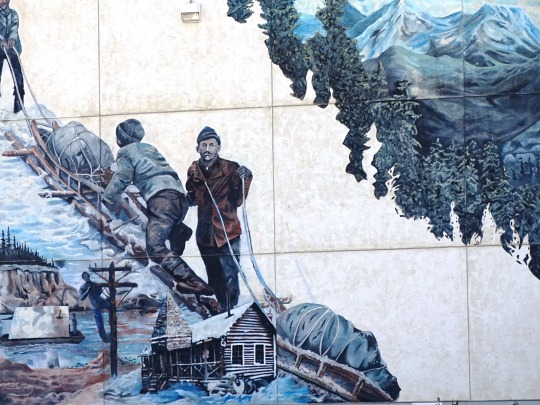

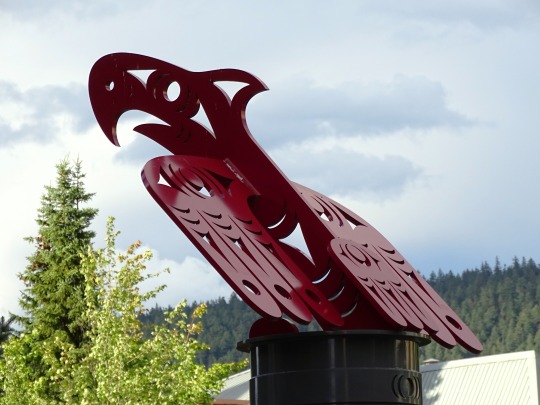


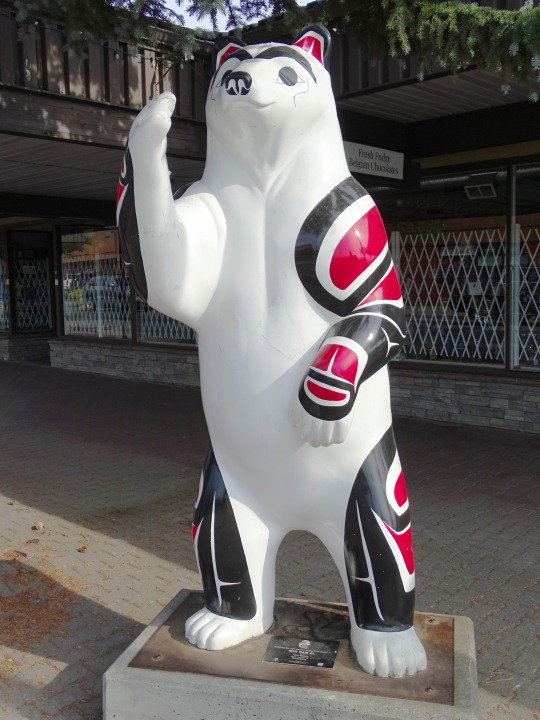









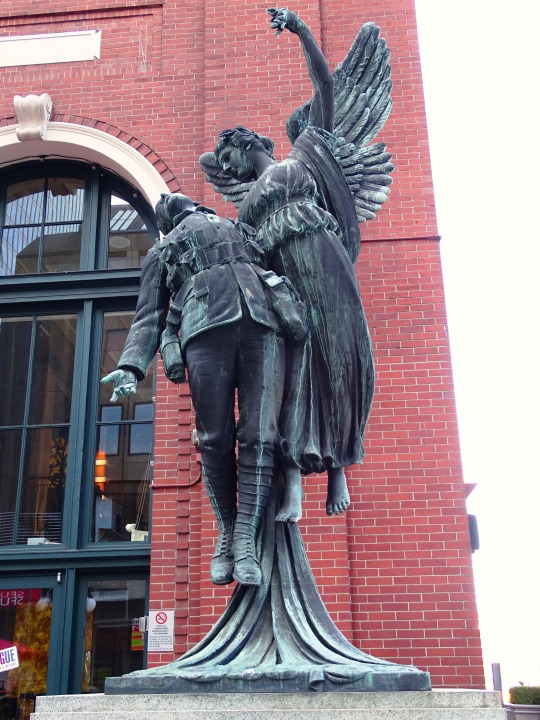



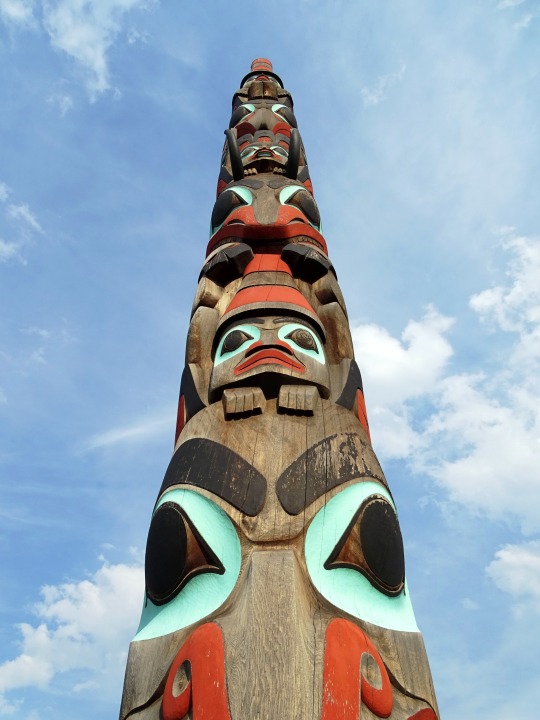

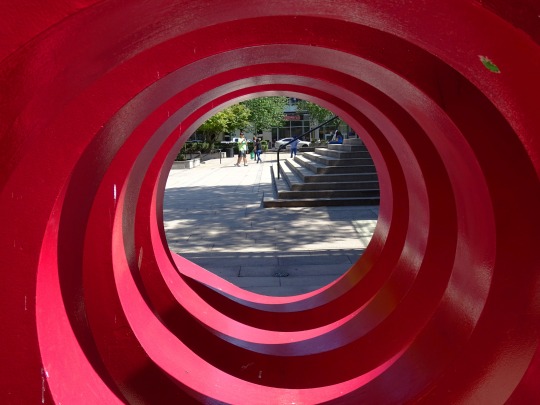
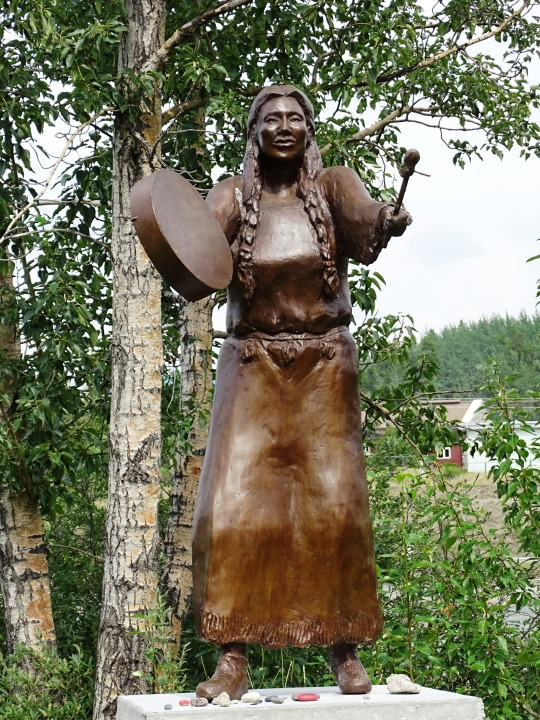


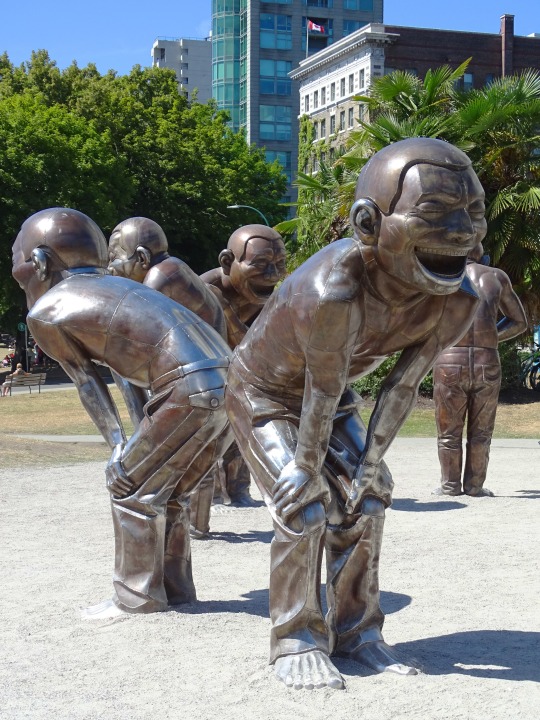
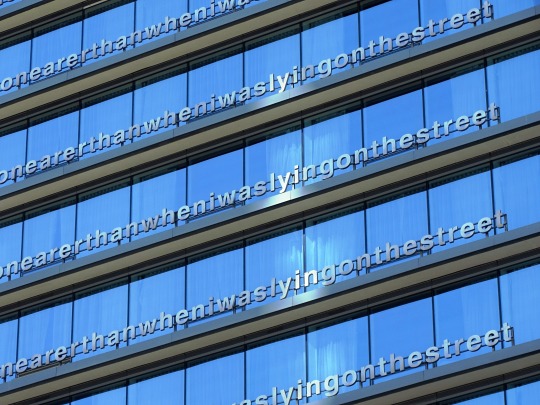
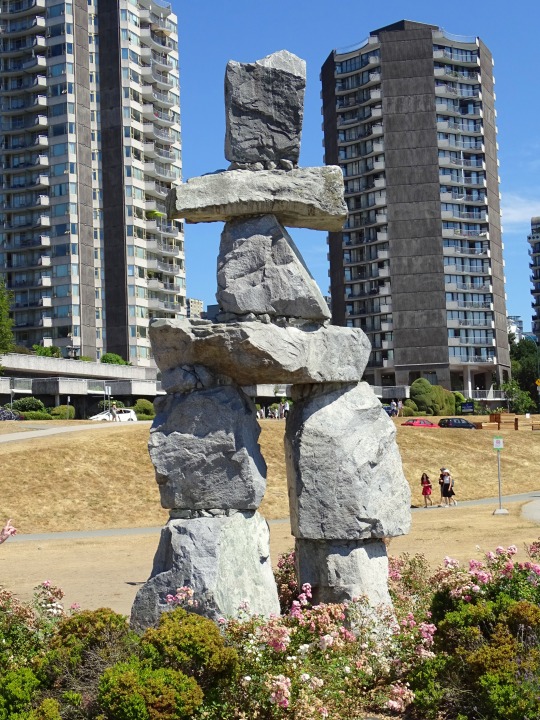
World Art Day
World Art Day is celebrated every year on April 15. All around the world, people have their definitions for what they consider to be art. Different cultures have different tastes and styles. This holiday is used as an opportunity to promote the development of art. It encourages people to take the time to notice the beautiful things around them. With our busy schedules, people don’t always have the time to go to art galleries. A yearly reminder about beauty helps people relax and just enjoy experiencing the world. It shares knowledge, sparks curiosity, and leads to very interesting conversations.
History of World Art Day
World Art Day was declared on April 15 at the General Assembly of the International Association of Art. The first celebration was in 2012. The date was chosen to honor the birthday of the famous Leonardo da Vinci. Da Vinci represents tolerance, world peace, freedom of expression, and multiculturalism. The first world art day was supported by all the International Association of Art (I.A.A.) national committees. There were 150 artists from countries all over the world to ensure inclusion. There were conferences and special museum hours. Outdoor art exhibitions were held to display paintings, prints, sculptures, videos, and more.
Art comes in different forms and categories. Art can be architecture, music, painting, sculpting, dance, or literature. Cinema is also considered art. It is a way for people to express themselves through creativity. True art is simply an expression of emotion. It represents the artist’s view of the world and how they feel about it. Art communicates how similar we can be and also how different. People get their meanings of art when they experience it. Their perceptions are usually based on their personal experiences in life.
World Art Day is a great reminder to help people notice the beauty around them. It reminds people to express themselves fully. We are all full of emotions and should be allowed to show them without fear. The goal is to facilitate the sustainable development of art. With enough support, artists can continue to portray beauty.
World Art Day timeline
1948 The I.A.A. is Born
The International Association of Art is founded in Beirut.
1954 The I.A.A. Becomes Independent
The International Association of Art becomes an independent organization and a UNESCO partner.
2012 World Art Day is Founded
The first World Art Day takes place in Guadalajara on April 15.
2013 World Art Day is Held in South Africa
World Art Day is celebrated by Mbombela municipal art museum in South Africa
World Art Day FAQs
Can anyone create art?
Anything that was created from the imagination as an expression of emotion is considered art. Art can be made by anyone.
Is cooking an art?
Cooking can be considered an art form. A cake, for example, can be considered a beautiful work of art.
Which cities are known for art?
Cities like Rome, Paris, Vienna, and Jerusalem are well-known for their arts and culture. Florence, Mexico City, Venice, London, Barcelona, and Lagos are also known for art.
World Art Day Activities
Create some art
Visit an art museum
Watch a great movie
You can get in touch with your creative side. You can write, draw, paint or take photographs.
There are many art museums and galleries that you can visit. They carry many beautiful art pieces that you can buy or just enjoy looking at.
Movies are considered to be a form of art. Enjoy a classic movie that tells a great story.
5 Fascinating Facts About Art
Art comes from the imagination
Art is a career field
Art can be a performance
Art helps the mind
Art is emotional
Humans use their creative skills and imagination to create something that others can see
Art has professional applications like fashion design, jewelry design, architecture, and wood crafts.
Performance arts include music, dance, and theater.
Art improves hand-eye coordination, strengthens focus, and teaches problem-solving.
Art can help people express complex feelings and emotions.
Why We Love World Art Day
Art is universal
Art is good for the health
Art opens the mind
Art can be understood by people all over the world. It has no language or border barriers.
Art is known to help increase motivation, build self-esteem, and improve holistic health.
Art helps people to see the world from a different point of view. It helps them get a new perspective.
Source
#World Art Day#15 April#WorldArtDay#original photography#tourist attraction#ArtHistoryDay#travel#vacation#cityscape#architecture#landmark#USA#Canada#summer 2023#Two Brothers Totem Pole by Jaalen and Gwaai Edenshaw#Building on the Past Looking to the Future by Ken Anderson#Finding Peace Monument by Halain De Repentigny#Prospector and his dog by Chuck Buchanan#Wings of Hope by Amanda Hugon#A-maze-ing Laughter by Yue Minjun#Inukshuk by Alvin Kanak#Spring by Alan Chung#Digital Orca by Douglas Coupland#The Drop by Inges Idee#No Caulks Allowed by Roger Fox#Pelican on Parade by Stefan Savides#Greetings From Bend by Katie Daisy and Karen Eland#“Spirit Horse” by Smoker Marchand
3 notes
·
View notes
Text




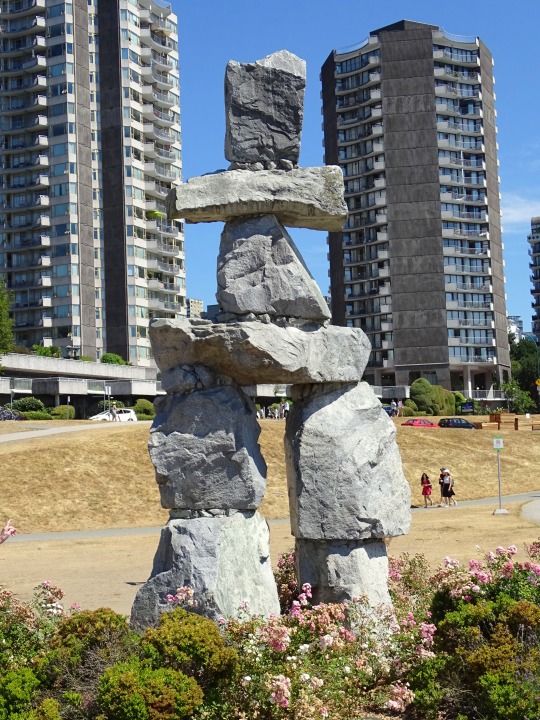

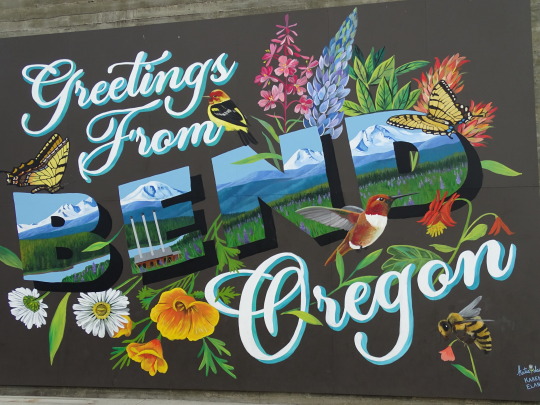




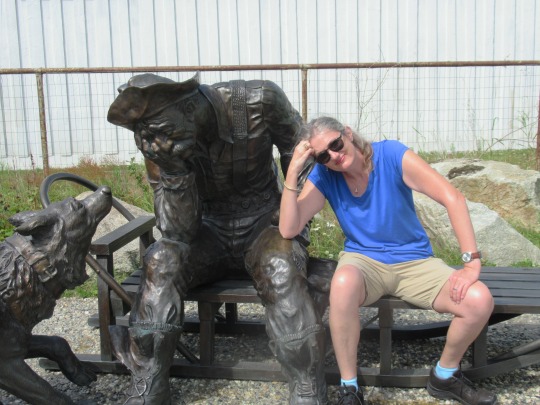

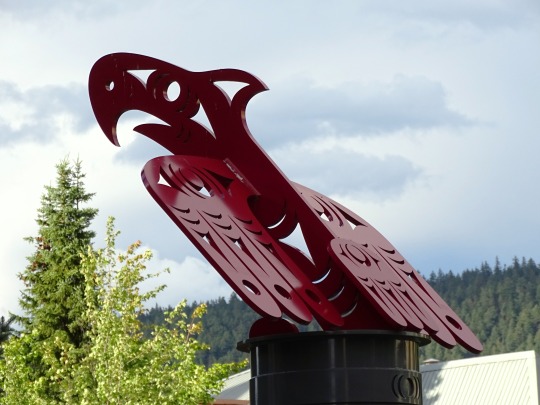

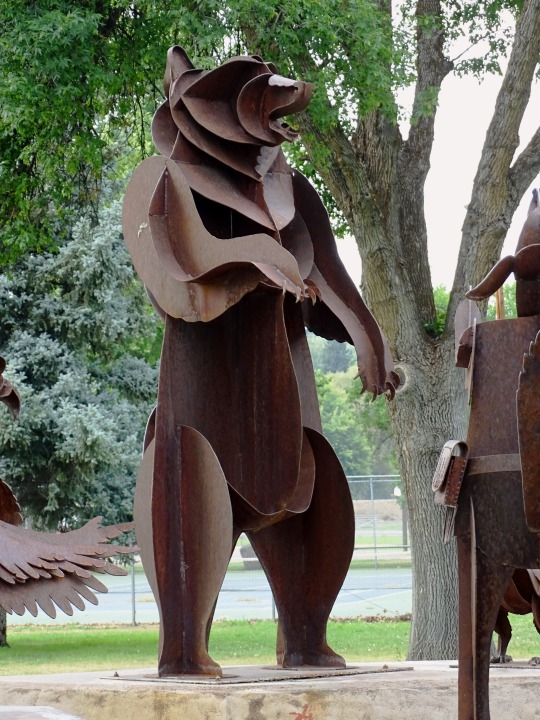
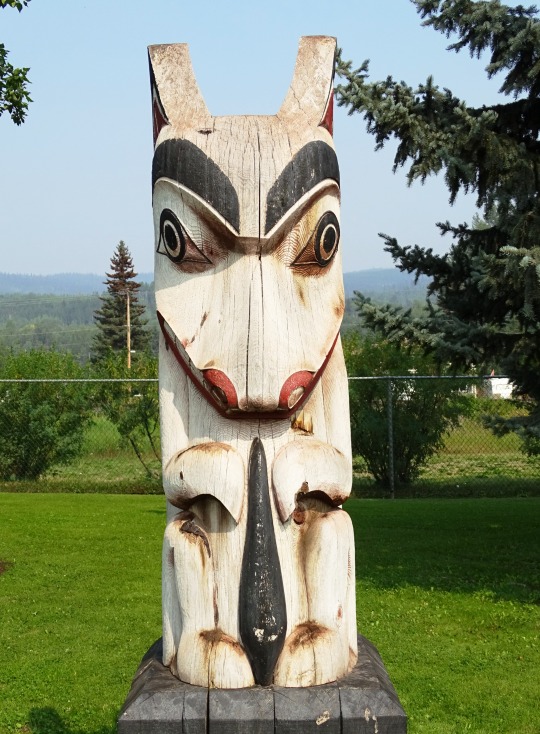
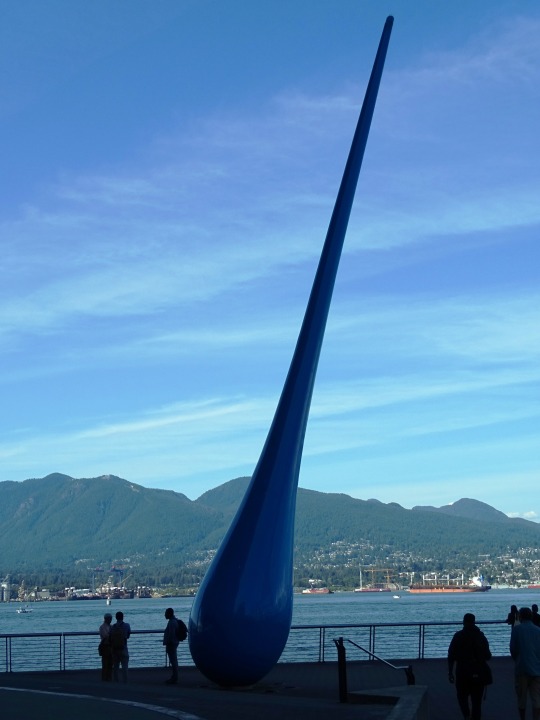




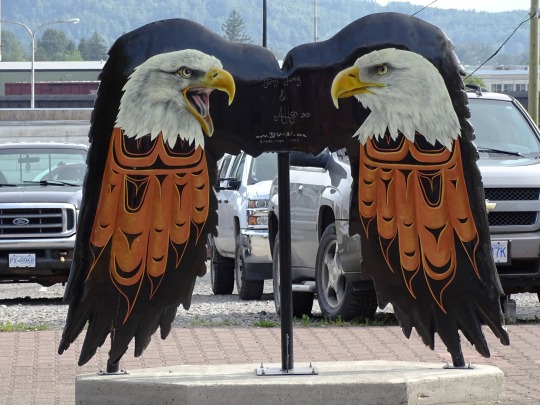

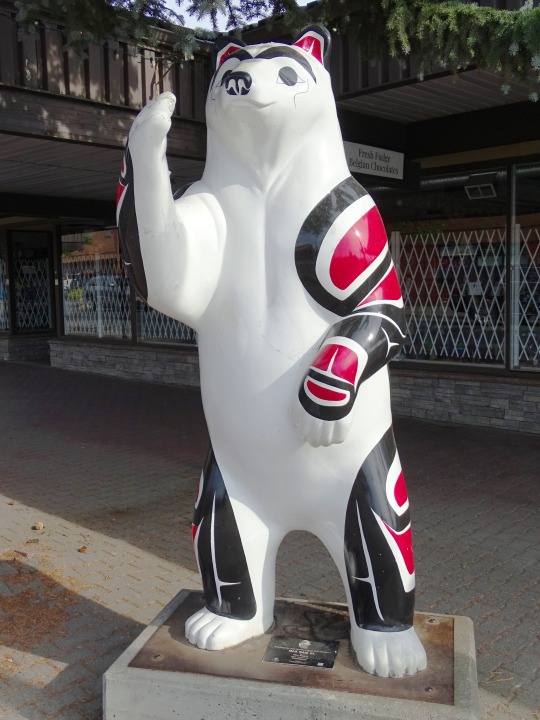

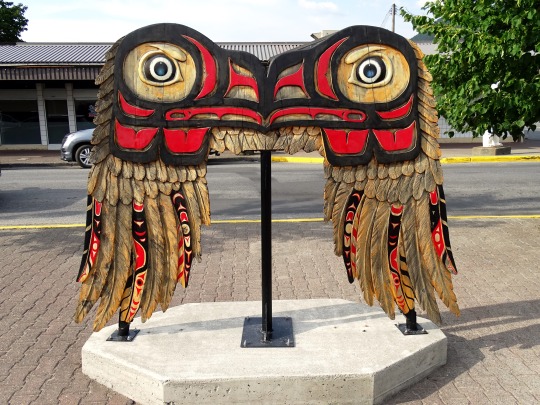
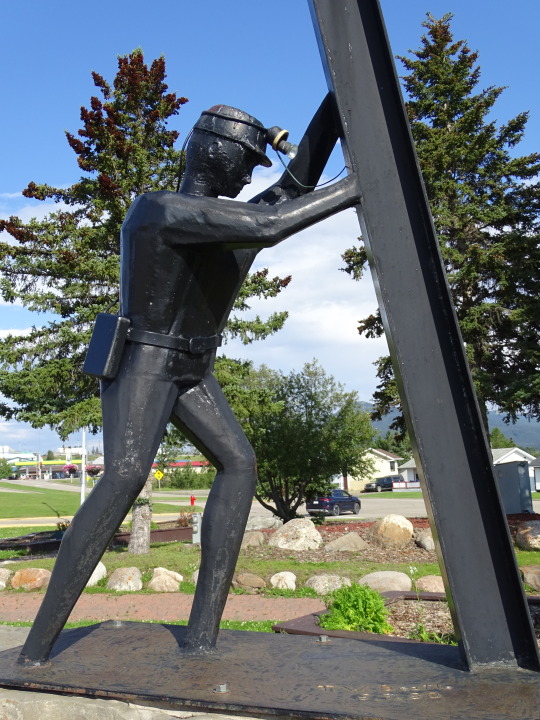
Inspire Your Heart with Art Day
Inspire Your Heart with Art Day is celebrated annually on January 31. Art can touch our souls and make a lasting impact. Whether it’s a piece of music or a painting, it can broaden our horizons and inspire us in many ways.
History of Inspire Your Heart with Art Day
It was undoubtedly a creative and artistic person who created this day that shines a spotlight on the importance and power of art. We often don’t realize the impact art can have on our hearts. It can inspire, motivate, guide, and touch us in more ways than we can imagine.
Art has been around for a very long time. Several archaeologists found the first artifacts of human art, which date back to the Stone Age. Since then, art has developed over the years and is appreciated for a variety of reasons. Inspire Your Heart with Art Day is celebrated by various art organizations and strives towards appreciating all forms of art.
Many associate art with paintings only but it comes in many forms and it almost always inspires or touches your heart. Inspire Your Heart with Art Day is the perfect day to take a closer look at a piece of art to understand what the artist is trying to communicate. With an open mind, you can allow it to inspire you and change your perspective on many things. Art satisfies our basic need for harmony and balance, and it brings people together. Art also acts as an important form of communication that bridges the language barrier. Art can really go a long way in making a social impact on our lives.
On this day, it is a nudge to let your heart be inspired by paintings, books, music, movies, drama, e.t.c., whichever form of art draws your interest.
Inspire Your Heart with Art Day timeline
1504 Statue of David
Michelangelo completes the sculpture of David.
17th Century Sir Isaac Newton’s Color Wheel
Newton invents the color wheel, which allows artists to observe the most effective color complementation.
1889 Vincent van Gogh’s “Starry Night”
Van Gogh paints his famous Starry Night while at the asylum of Saint-Paul-de-Mausole.
1912-1948 Art in Olympics
Art is part of the Olympics and medals are awarded for painting, sculpting, music, architecture, and literature.
Inspire Your Heart with Art Day FAQs
What are the genres of art?
The genres of art keep evolving. Some of the traditional categories of art include literature, visual art, graphic art, plastic arts, and the decorative arts.
What can be called art?
Art is an object or experience created through an expression of skill or imagination. Over the years, there have been many different things that have been encompassed under the umbrella of art.
What is the highest form of art?
While art comprises many genres, literature is often regarded as the highest form of art.
Inspire Your Heart with Art Day Activities
Attend a live theatre performance
Share your art with others
Read a book
Theatre actors put in a lot of effort to perfect their acts. Everything from their voices, to acting, to building confidence. A live theatre performance has no retakes and actors have to get it right the first time around. Attend a live performance to appreciate the hard work and talent.
Have you been secretly painting, or writing a song, or even a short story? Well, it’s time to put it out there. Share your art with your family or friends. It may inspire others to dive into the world of art as well.
Books are a great way to expand your knowledge on varying subjects, even if it is fiction. A fictional novel set in a different country can open up your mind to new cultures. Let your imagination run free when you pick up a good book to read.
5 Fascinating Facts About Art
The Mona Lisa
A museum for spoons
Tallest statue
Oxford dictionary’s definitions
Leonardo Da Vinci was ambidextrous
The Mona Lisa painting became immensely popular only after it was stolen.
Lambert Castle in New Jersey is home to a massive collection of spoons.
The tallest statue in the world, the Statue of Unity in India, measures 597 feet in length.
The Oxford dictionary has 12 definitions of the word art.
Da Vinci could write with one hand and draw with the other.
Why We Love Inspire Your Heart with Art Day
It helps you to express yourself
Art offers different perspectives
Art encompasses many genres
Art is an excellent way to express oneself. Many times, we can’t express ourselves in our daily lives and tend to bottle up those feelings. Art can help you release pent-up emotions via paintings, books, music, e.t.c. It allows one to truly be themselves.
Through art and the perspective of the artist, we are exposed to many different viewpoints. Appreciating art encourages our brain to think differently, to understand why a piece of art was created, and to learn the story behind it. Art can help you put many things into perspective and help overcome unresolved issues.
Art is not just paintings, it goes well beyond that. Art encompasses a multitude of genres such as writing, singing, dancing, cooking, films, and more. With a plethora of options available, it’s easy to find inspiration.
Source
#Two Brothers Totem Pole by Jaalen and Gwaai Edenshaw#Meet Jeri by James Stewart#Spring by Alan Chung#Digital Orca by Douglas Coupland#217.5 Arc x 13 by Bernar Venet#Inukshuk by Alvin Kanak#Thunderbird sculpture by Jody Broomfield#Building on the Past#Looking to the Future by Ken Anderson#Greetings From Bend by Katie Daisy and Karen Eland#“Spirit Horse” by Smoker Marchand#Prospector and his dog by Chuck Buchanan#“How the Animals Got Their Names” by Smoker Marchand#InspireYourHeartWithTheArtsDay#Inspire Your Heart with Art Day#31 January#USA#Canada#summer 2023#travel#original photography#vacation#tourist attraction#landmark#cityscape
2 notes
·
View notes
Text







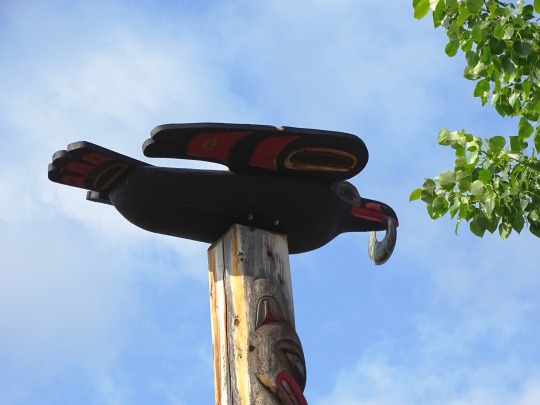

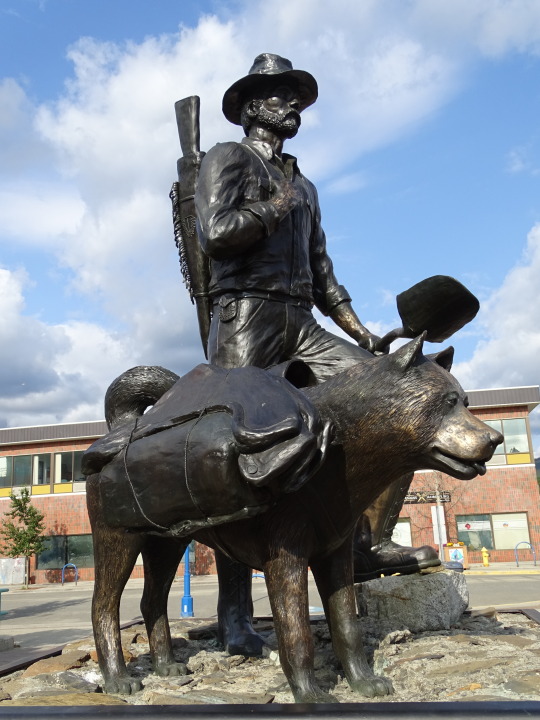
Clouds (No. 1139)
Whitehorse, YU
#Prospector and his dog by Chuck Buchanan#travel#original photography#vacation#tourist attraction#landmark#clouds#nature#Canada#summer 2023#fir#the North#blue sky#Alaska Highway#cityscape#architecture#Statue of desk and bust honoring author Robert Service#Burns Building#public art#Yukon#The Healing Totem
3 notes
·
View notes
Text
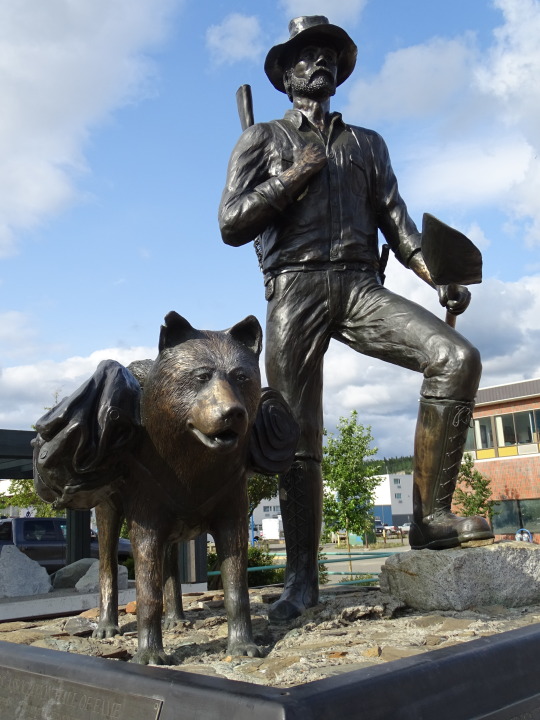

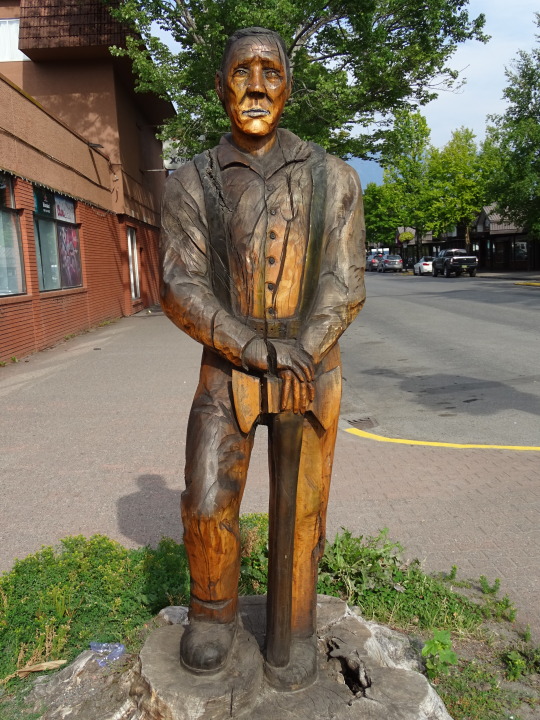
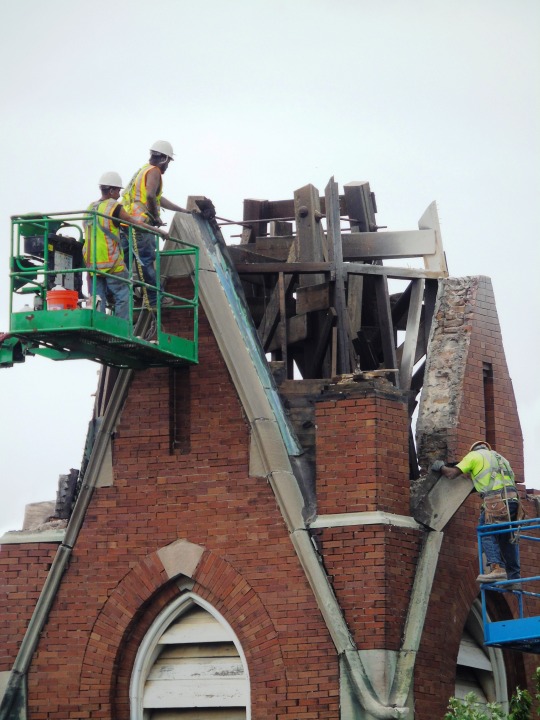
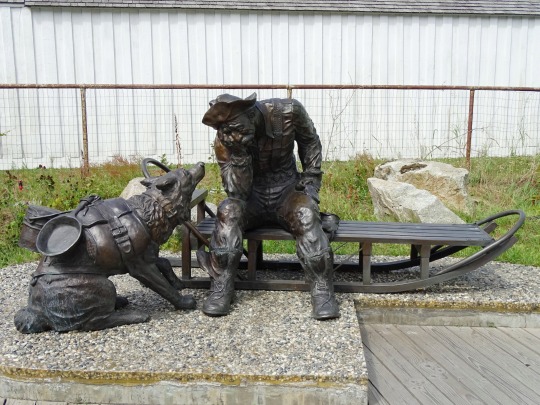

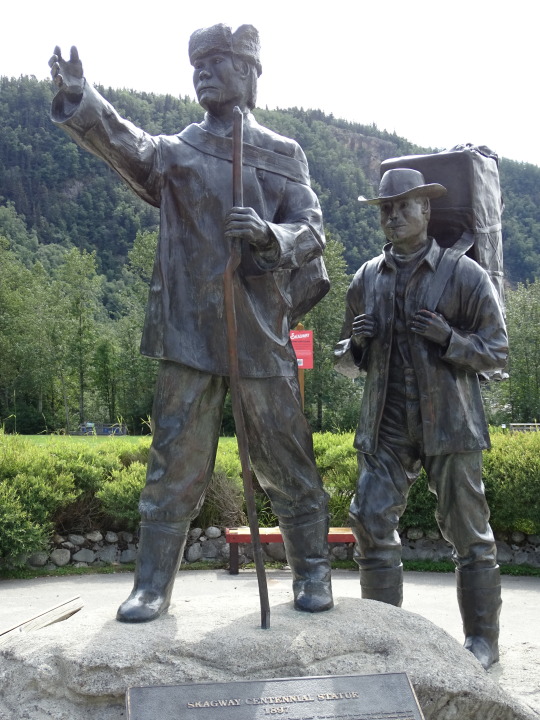



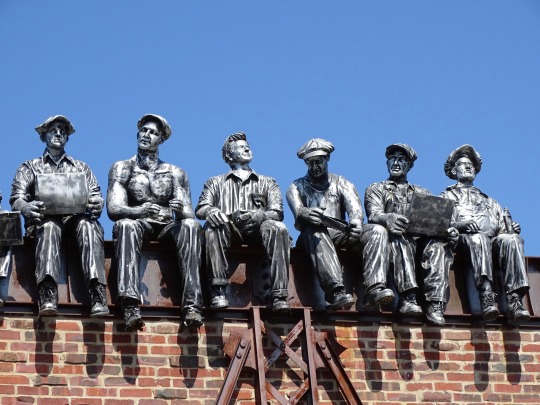

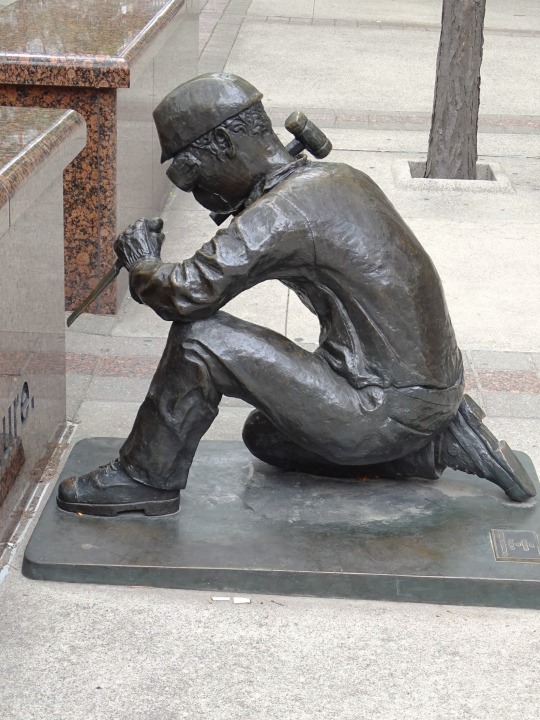
Labor Day
Summer’s final fling has arrived in the form of Labor Day. Yes, most of us get the day off, but this holiday triggers mixed emotions. While summer still has 21 calendar days left, it’s time to get serious. School’s starting and there’s a sense that summer vacation is over. So what’s behind Labor Day — and how did it earn a place as a federal holiday?
Let’s take a look.
When is Labor Day 2023?
Labor Day always falls on the first Monday in September, which means anywhere from September 1 through September 7. This year it's September 4 in the U.S. and Canada. However, this is not the case for most countries — the majority of which celebrate on May 1.
History of Labor Day
Do you get weekends off work? Lunch breaks? Paid vacation? An eight-hour workday? Social security? If you said “yes” to any of these questions, you can thank labor unions and the U.S. labor movement for it. Years of hard-fought battles (and the ensuing legislation they inspired) resulted in many of the most basic benefits we enjoy at our jobs today. On the first Monday in September, we take the day off to celebrate Labor Day and reflect on the American worker’s contributions to our country.
Labor Day History
There’s disagreement over how the holiday began. One version is set in September 1882 with the Knights of Labor, the largest and one of the most important American labor organizations at the time. The Knights in New York City held a public parade featuring various labor organizations on September 5 — with the aid of the fledgling Central Labor Union (CLU) of New York. Subsequently, CLU Secretary Matthew Maguire proposed that a national Labor Day holiday be held on the first Monday of each September to mark this successful public demonstration.
In another version, Labor Day in September was proposed by Peter J. McGuire, a vice president of the American Federation of Labor. In spring 1882, McGuire reportedly proposed a “general holiday for the laboring classes” to the CLU, which would begin with a street parade of organized labor solidarity and end with a picnic fundraiser for local unions. McGuire suggested the first Monday in September as an ideal date for Labor Day because the weather is great at that time of year, and it falls between July 4th and Thanksgiving. Oregon became the first U.S. state to make it an official public holiday. 29 other states had joined by the time the federal government declared it a federal holiday in 1894.
Maguire or McGuire? Read more on this unusual coincidence in our FAQs below.
What is the Haymarket affair?
On May 4, 1886 — at a time when most American laborers worked 18 or even 20 hours a day — tens of thousands of workers protested in cities all across the U.S. to demand an eight-hour workday. Police in Chicago attacked both those peaceful protests and a workers planning meeting two days later, randomly beating and shooting at the planning group and killing six. When outraged Chicagoans attended an initially peaceful protest the next evening in Haymarket Square, police advanced on the crowd again. Someone who was never identified detonated a bomb that killed a police officer, leading cops to open fire on protesters and provoke violence that led to the deaths of about a dozen workers and police.
The Pullman strike
Ironically, Chicago was also the setting for the bloody Pullman strike of 1894, which catalyzed the establishment of an official Labor Day holiday in the U.S. on the first Monday of September.
The strike happened in May in the company town of Pullman, Chicago, a factory location established by luxury railroad car manufacturer the Pullman Company. The inequality of the town was more than apparent. Company owner George Pullman lived in a mansion while most laborers stayed in barracks-style dormitories. When a nationwide depression struck in 1893, Pullman decided to cut costs the way a lot of executives at the time did — by lowering wages by almost 30% while he kept the rent on the dormitories he leased to his workers at pre-depression levels.
Railroad boycott
These conditions ultimately led workers to strike on May 11, 1894. The walkout gained the support of the nationwide American Railroad Union (ARU), which declared that ARU members would no longer work on trains that included Pullman cars. That national boycott would end up bringing the railroads west of Chicago to a standstill and led to 125,000 workers across 29 railroad companies quitting their jobs rather than breaking the boycott.
When the Chicago railroad companies hired strikebreakers as replacements, strikers also took various actions to stop the trains. The General Managers Association, which represented local railroad companies, countered by inducing U.S. Attorney General Richard Olney, a former railroad attorney, to intervene. Indianapolis federal courts granted Olney an injunction against the strike, a move that allowed President Grover Cleveland to send in federal troops to break it up.
A few days later, Cleveland realized that he had to act quickly to appease the country’s increasingly agitated labor movement. But he didn’t want to commemorate the Haymarket incident with a May holiday that would invoke radical worker sentiment. So Cleveland harkened back to the first established September 1882 holiday and signed into law that Labor Day in the U.S. would be celebrated on the first Monday in September.
Labor Day vs. May Day
Communist and socialist factions worldwide eventually chose May 1 as the date to mark the Haymarket affair. A 1904 conference issued a plea that trade unions stage rallies on the first day of May — demanding to make the eight-hour workday standard. They organized the action in the name of “universal peace.” The 1st of May is a national, public holiday in many countries across the world, generally known as “Labour Day,” “International Workers’ Day,” or a similar name – although some countries celebrate a Labor Day on other dates significant to them, such as Canada, which celebrates Labor Day, like the U.S., on the first Monday of September.
Here’s the U.S. Department of Labor’s official tribute to U.S. workers on Labor Day:
“The vital force of labor added materially to the highest standard of living and the greatest production the world has ever known, and has brought us closer to the realization of our traditional ideals of economic and political democracy. It is appropriate, therefore, that the nation pays tribute on Labor Day to the creator of so much of the nation’s strength, freedom, and leadership — the American worker.”
Related Labor Day Content
1) Top Labor Day quotes for your social feeds
Can you guess which president said, “My father taught me to work; he did not teach me to love it”? How about the famous American who uttered “All labor that uplifts humanity has dignity”? We have a list of Labor Day quotes to not only learn about the holiday but to also impress your friends at the barbecue.
2) Fire yourself from your own job
That’s correct. The makers of STōK cold-brew coffees have designed a contest — running through Labor Day — which will give three people $30,000 each in order to take a four-week “STōKbbattical” (from their dreary day jobs) and “make their dreams happen.” It can be anything from rock climbing in Patagonia to setting records for the number of tapas eaten in Spain. No matter what, STōK will help fund it. Unless of course, you’d prefer to spend the next four weeks filling out TPS reports.
3) 8 Labor Day Activities To Enjoy
Whether in the form of a leisurely barbeque, a relaxing swim in the pool, watching a film at a drive-in cinema, or even just relaxing at home with family, there are so many different ways to mark the occasion. We list some activities to try on Labor Day.
Labor Day timeline
1882 It’s Unofficial
10,000 labor workers march through Union Square in New York to protest poor working conditions and low wages.
1884 A Date is Set
The first Monday of September officially becomes Labor Day, with the Central Labor Union pushing other organizations to follow suit and celebrate.
1894 Congress Approves
Labor Day is approved as a national holiday by Congress, and President Grover Cleveland signs it into law.
2009 Let’s Not Forget Women in Labor
President Obama restores the rights of women to sue over pay discrimination with the Lilly Ledbetter Fair Pay Act.
Labor Day Traditions
Much like Memorial Day, which marks the traditional beginning of summer, Labor Day generally signifies that the season has ended — even though the calendar says otherwise. Holiday sales, barbecues, and travel tend to rule the day, while children finally adjust to the harsh reality of the “back-to-school” season. As far as U.S. sports are concerned, Labor Day weekend signals that baseball’s pennant races have entered their final stretch, and tennis fans get an extra day to watch the season’s last Grand Slam event — the U.S. Open in New York City. NFL regular-season games typically begin following Labor Day.
Labor Day by the numbers
162 million – the number of Americans (over 16) in the labor force.
40% – the percentage of U.S. workers who belonged to labor unions in the 1950s (that dropped to 11% by 2018).
1894 – the year Congress officially made Labor Day a federal holiday.
86% – the percentage of Americans planning Labor Day weekend travel who will do so by car.
41% – the percentage of Americans who plan to barbecue over Labor Day Weekend.
818 – the number of U.S. hot dogs eaten every second from Memorial Day to Labor Day.
$685 – the average kid’s back-to-school expenses.
$55,000 – the median U.S. household income.
705 million – the total number of U.S. unused vacation days (2017).
80% – the percentage of Americans who would take time off if their boss were more supportive.
— courtesy WalletHub ©2018
Labor Day FAQs
What does Labor Day really mean?
Americans, as well as workers around the world, celebrate Labor Day by reflecting on all the contributions everyday workers have made to society. Not all countries observe Labor Day on the same date though.
When is Labor Day 2020?
The U.S. observed Labor Day 2020 on Monday, September 2. It’s a federal holiday. Financial markets are closed. There is no mail delivery. Post offices and libraries are closed. Most retail businesses will remain open.
Who invented Labor Day?
It’s more confusing than you might think. The Labor Department explains it this way:
While most sources, including the U.S. Department of Labor, credit Peter McGuire with the origination of Labor Day, recent evidence suggests that the true father of Labor Day may, in fact, be another famous union leader of the 19th century, Matthew Maguire.
Maguire held some political beliefs that were considered fairly radical for the day and also for Samuel Gompers and his American Federation of Labor. Allegedly, Gompers, who co-founded the AFL along with his friend McGuire, did not want Labor Day to become associated with the sort of “radical” politics of Matthew Maguire. So in an 1897 interview, Gompers’ close friend Peter J. McGuire was assigned the credit for the origination of Labor Day.
What's the difference between Labor Day and May Day (May 1)
May 1 (or May Day) is a more radicalized version of Labor Day in many countries. The date recalls Chicago’s Haymarket affair in 1886. American workers, tired of 18-hour days, staged a protest. Police eventually fired on the workers — killing eight. The following night, May 4, another rally turned violent when someone threw a bomb at police officers. An estimated 11 people died and scores more were injured. Communist and socialist political parties eventually chose May 1 as the date to honor the dead and injured workers.
Labor Day Activities
Read up on the history of Labor Day
Buy an American-made product
Watch a movie about labor unions
Labor Day has a rich history that directly impacts the working conditions we experience today. So in between rounds of BBQ at your Labor Day celebration, take the time to discuss the U.S. labor movement and its contribution to our country's current work culture.
When you're doing your Labor Day shopping, take the time to read the labels. Consider buying products that say "Made in the USA" to show your support for American workers.
Many of us get Labor Day off. What better way to relax than to stretch out on the couch and watch a movie about the American labor movement? There are tons of union-themed movies to choose from. "Norma Rae" ring a bell? Side note: Unions play a major role in the entertainment industry.
5 Labor Day Facts Everyone Should Know!
It’s on May 1 in other countries
Stores remain open
Third most popular holiday for outdoor cookouts
Labor Day marks the unofficial NFL kickoff
Union members today
Most countries around the world celebrate Labor Day on May 1, and it is called International Workers’ Day.
While most schools and offices are closed on Labor Day, retail workers and shopkeepers don’t get the same break, as the holiday is huge for sales and shopping.
Labor Day is right behind the Fourth of July and Memorial Day in being the most popular holiday for barbecues and cookouts.
99.4% of the time, the NFL’s first official game of the season is on the Thursday following Labor Day.
In 2017, there were 14.8 million union members, according to the Bureau of Labor Statistics, while in 1983, there were 17.7 million.
Why We Love Labor Day
We're hard workers — we deserve the day off
It's one last chance to grill
It's the reason we can say TGIF
Statistics show that Americans work longer hours than citizens of most other countries — 137 more hours per year than Japan, 260 more per year than the U.K., and 499 more than France. And our productivity is high — 400% higher than it was in 1950, to be exact. So we totally deserve that day off.
Labor Day is widely considered to be the unofficial last day of summer. Before the air turns cold and the leaves start to fall, it's our last chance to grill some steaks and wear shorts.
Labor Day is a time to celebrate the benefits we enjoy at our jobs — including weekends off. The concept of American workers taking days off dates back to 1791, when a group of carpenters in Philadelphia went on strike to demand a shorter workweek (10-hour days, to be exact). It wasn't until 1836 that workers started demanding eight-hour workdays. So nine to five doesn't sound so bad after all.
Source
#Logger by Joerg Jung#Prospector and his dog by Chuck Buchanan#Stampeder Statue by Peter Lucchetti#Skagway Centennial Statue by Chuck Buchanan#Standing Together by John Greer#Anonymity of Prevention by Derek Lo and Lana Winkler#Terrace#Skagway#Ottawa#Chicago#New York City#Toronto#Whitehorse#USA#Canada#Labor Day#First Monday in September#4 September 2023#LaborDay
2 notes
·
View notes
Text

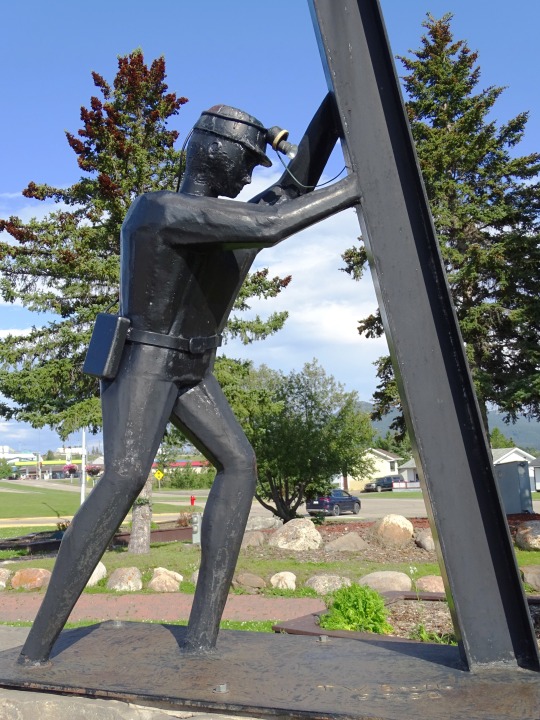


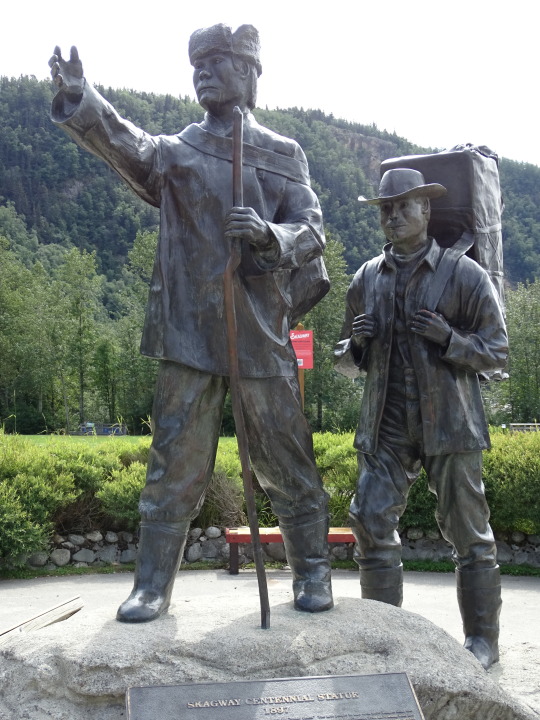


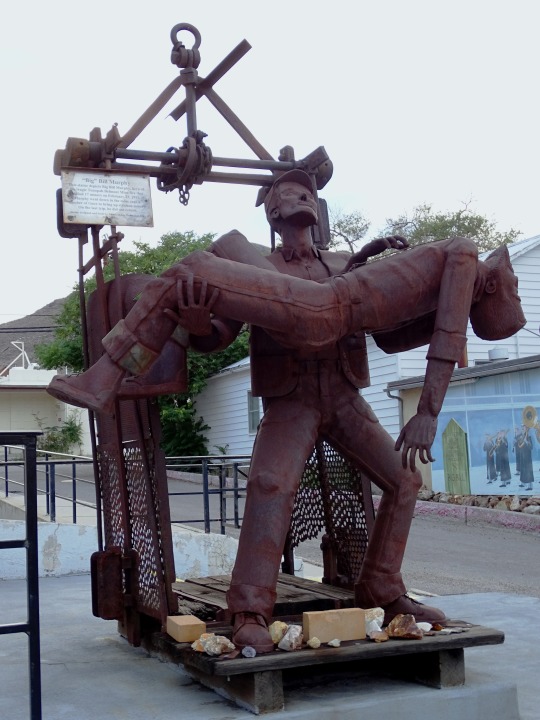


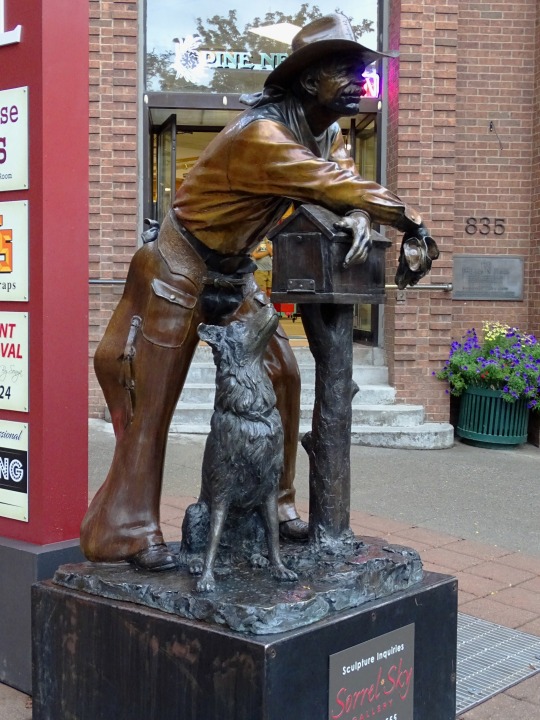
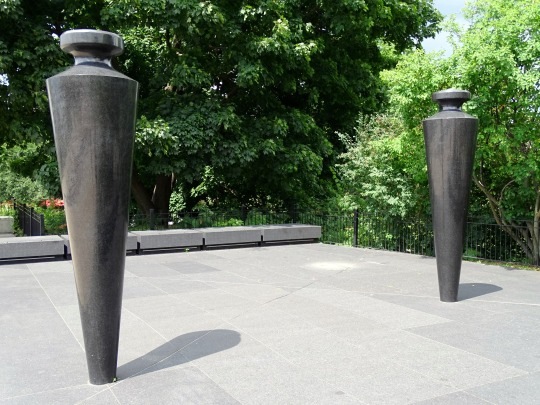





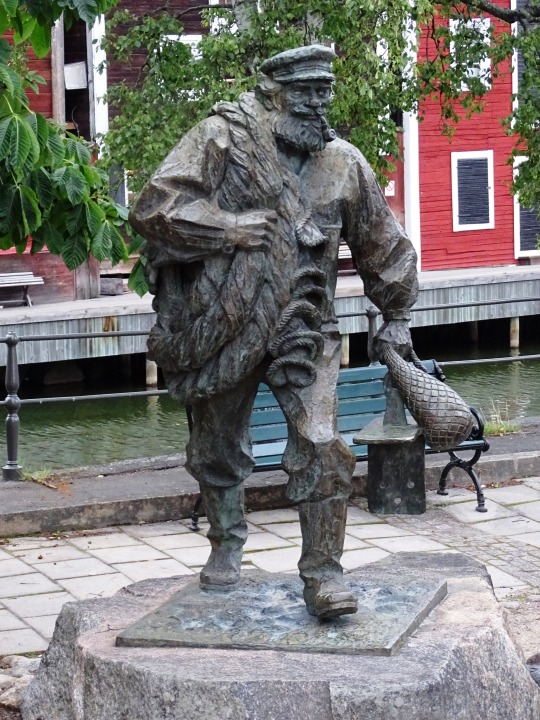

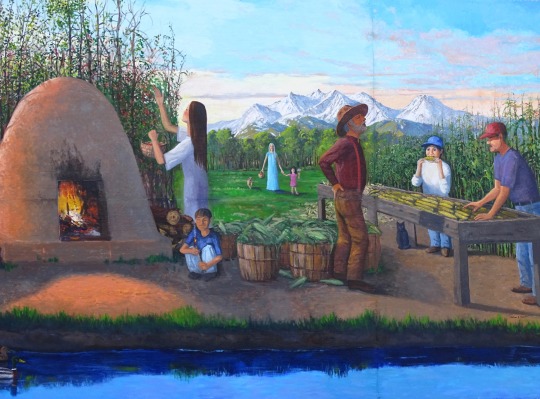
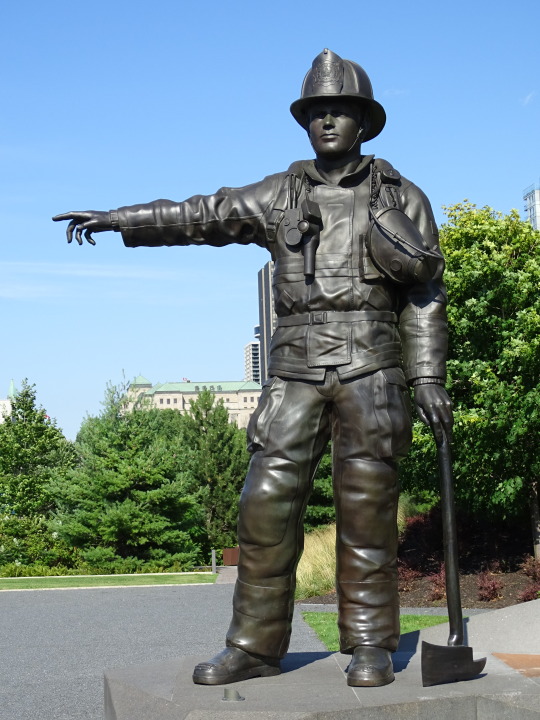



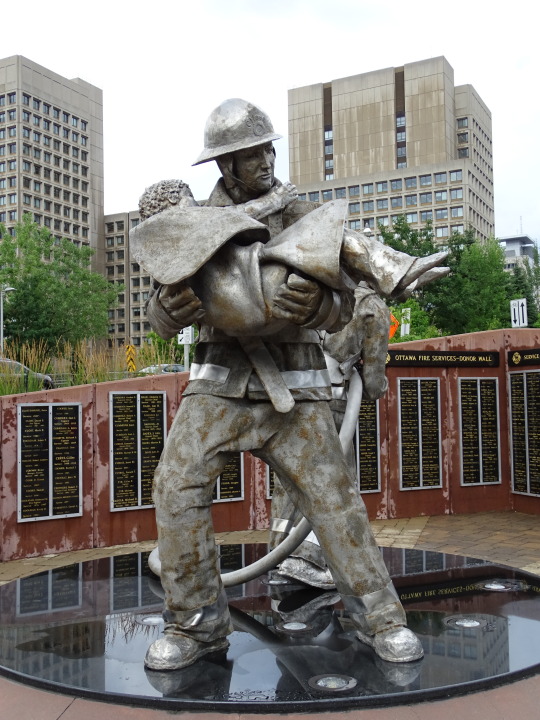

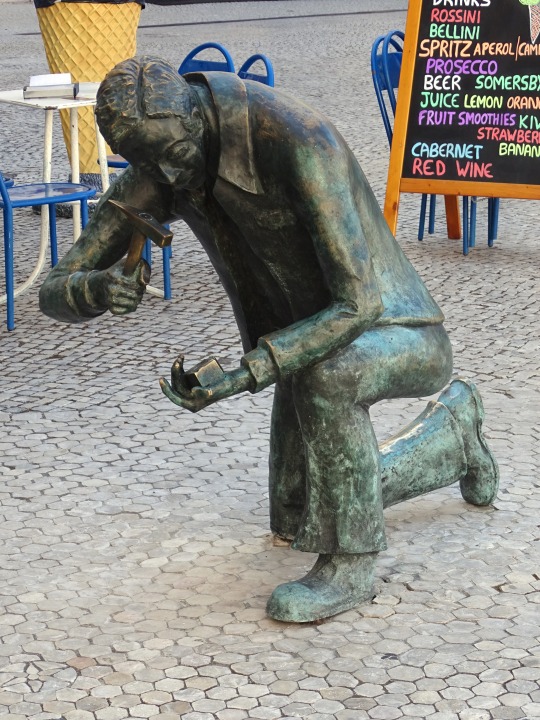
International Workers Memorial Day
Workers’ Memorial Day is an international holiday marked on April 28 annually. It is observed to raise awareness of the importance of workplace safety, as well as commemorate all the workers who have lost their lives due to work-related illnesses and those whose lives have been put on hold due to injuries that have incurred while working. According to figures, the number of people who get killed at work is higher than those who lose their lives to wars and drug abuse combined! Labor unions around the world observe this day to remember their fallen heroes and discuss measures to ensure safe workplaces.
History of Workers Memorial Day
Although it only became widely popular when the U.S. first celebrated it on April 28, 1989, Workers’ Memorial Day had been celebrated several years before then by Canada on the same day. Perhaps, the unpopularity associated with Canada’s first observation can be credited to the fact that it was celebrated under a different, albeit similar name. Regardless of who first observed it though, the day was inspired by the signing of the Occupational Safety and Health Act into law in 1970 and the formation of the OSHA on April 28, 1971.
In the early years of the signing of the OSHA into law, the celebration of the Workers’ Memorial Day was centered in North America. The holiday only attained international recognition in the last parts of the 20th and the beginning of the 21st centuries. In 1985, the Canadian Labor Congress pronounced April 28 as an annual day of remembrance — which is the anniversary of a Workers’ Compensation Act signed as far back as 1914. Progressively, the American Federation of Labor and Congress of Industrial Organization (A.F.L.-C.I.O.) declared April 28 as Workers’ Memorial Day to honor the thousands of people who have been injured or lost their lives on their jobs. The U.K. followed suit with their celebration in 1992.
Since the adoption of the holiday by the International Labor Organization (I.L.O.) in 2001, many countries are now actively participating in observing it, with some deeming it fit to confer the holiday a public holiday status. Furthermore, to add value to the holiday, from 1996, annual themes began to be assigned to each year’s celebration of the day.
Workers Memorial Day timeline
1971 OSHA is Formed
The Occupational Safety and Health Administration (OSHA) is formed.
1989 A.F.L.-C.I.O. Declaration
The American Federation of Labor and Congress of Industrial Organizations declares April 28 as Workers' Memorial Day.
1992 Introduced in the U.K.
Tommy Harte introduces Workers' Memorial Day in the U.K.
1996 Themes Begin to Be Set
The I.C.F.T.U. begins to set annual themes for each Workers' Memorial Day.
2001 New Declaration
An agency of the United Nations — I.L.O. — recognizes Workers' Memorial Day and declares it World Day for Safety and Health at Work.
Workers Memorial Day FAQs
What does a labor union do?
Among many other things, labor unions are charged with fighting for the betterment of their workers’ welfare, remunerations, and all things needed for them to work in a favorable environment and for decent financial gratification. Generally, labor unions serve as mediators between their members and authorities. Their impacts have been felt by both employees and employers over the years.
Is a labor union a good thing?
It is. This is evident in the many advantages and privileges unionized workers get over their non-unionized counterparts. Most significant changes in employees’ welfare and safety were achieved through the struggles of labor unions. They do have their setbacks though.
Why do people not like unions?
Most governments and employers detest labor unions because of their strong affection for riots and strike actions. To the unions, those two are the most effective languages employers understand, and many a time, they do succeed in pressing home their demands with the employers.
How to Observe Workers Memorial Day
Inform the public about work safety
Strive for a safer environment at work
Honor the memories of fallen workers
Go out there and educate the public on the importance of staying safe while at work. Also, tell them the possible risks associated with their various works.
If you are working in an unsafe or potentially dangerous environment, get people to rally behind you and ask for a safer work environment from your employers. You might just be a cause for a good change.
Be it a close relative, friend, acquaintance, or stranger, honor the memories of those fallen heroes, who died in the cause of their works. Pay tributes to them or their loved ones.
5 Interesting Facts About Workers’ Memorial Day
It was first celebrated in Canada
It was unpopular at first
America made it popular
It became international
It's a public holiday in Gibraltar
Canada was the first country to mark it although under a different but similar name.
The event was first known but not quite as popular as it became in the later years.
It only began to be widely recognized when the U.S. marked it.
A host of country trade unions in Europe, Asia, Africa, Australia, and elsewhere observe it.
While it is simply a national holiday in other countries, it is a government-free public holiday in Gibraltar.
Why Workers Memorial Day is Important
It reminds us of successful struggles
It increases the unity between workers worldwide
It gives workers a more amplified voice
Workers' Memorial Day reminds us of how effective calling out to authorities for good changes can be. By doing so, we may be able to save someone's life.
Whichever continent you happen to be from and whichever race you belong to, this day increases the bond and unity between workers in achieving a common goal. We love this!
Workers around the world use the day to loudly voice out their work environment and other pressing demands. Considerate employers, on the other hand, listen to the demands.
Source
#Firefighter by Susan Velder#Miners Memorial by T.W. Seatle#Prospector and his dog by Chuck Buchanan#The Logger by Joerg Jung#Skagway Centennial Statue by Chuck Buchanan#Stampeder Statue by Peter Lucchetti#28 April#USA#Canada#International Workers Memorial Day#WorkersMemorialDay#original photography#travel#vacation#cityscape#tourist attraction#Whitehorse#Skagway#Chicos and Capulin by David Montgomery#Bad Decision by Vic Payne#Big Bill Murphy by Adam Skiles#Waiting on an Answer by George Lundeen#Anonymity of Prevention by Derek Lo and Lana Winkler#Standing Together by John Greer#Monument to the Calceteiro by Sérgio Stichini#Gruvabetaren by Helge Zandén#Strömmingsfiskaren by Per Nilsson-Öst
0 notes
Text

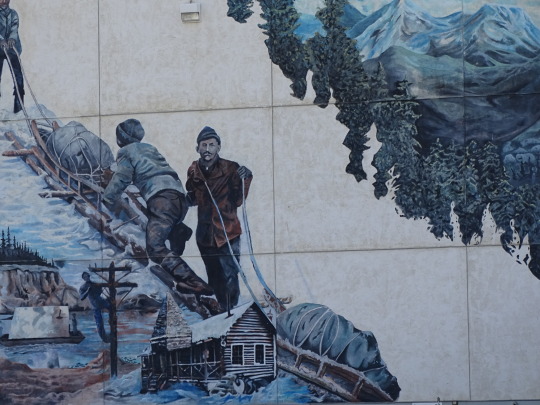

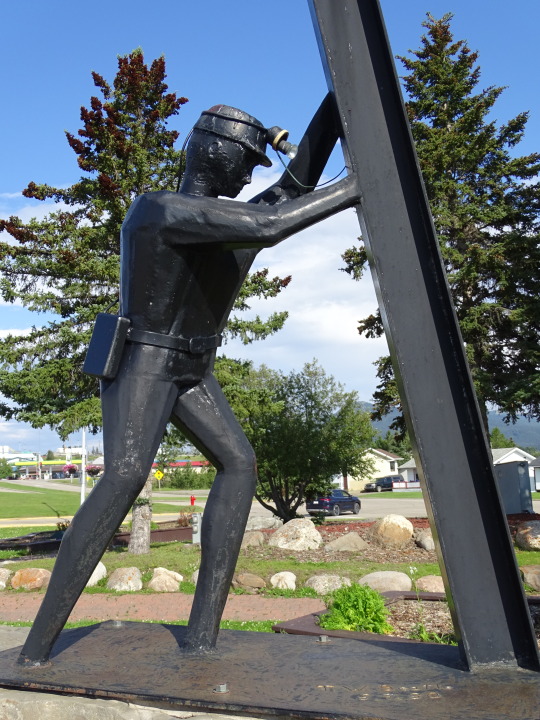

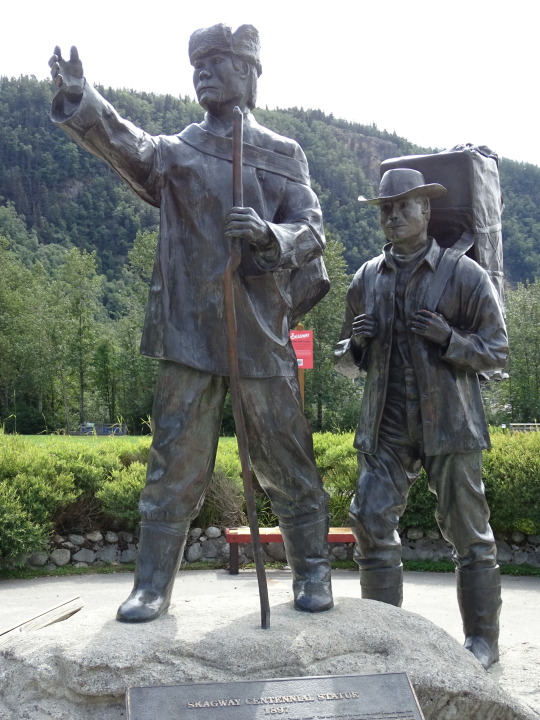

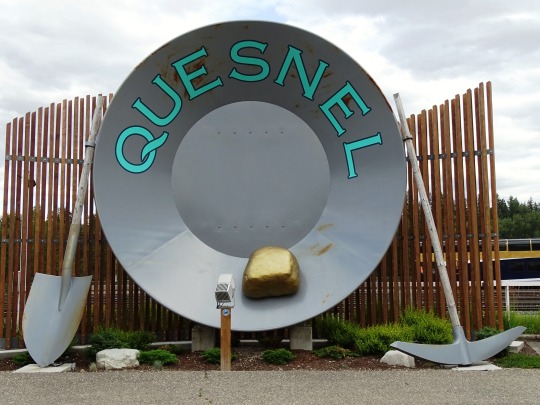

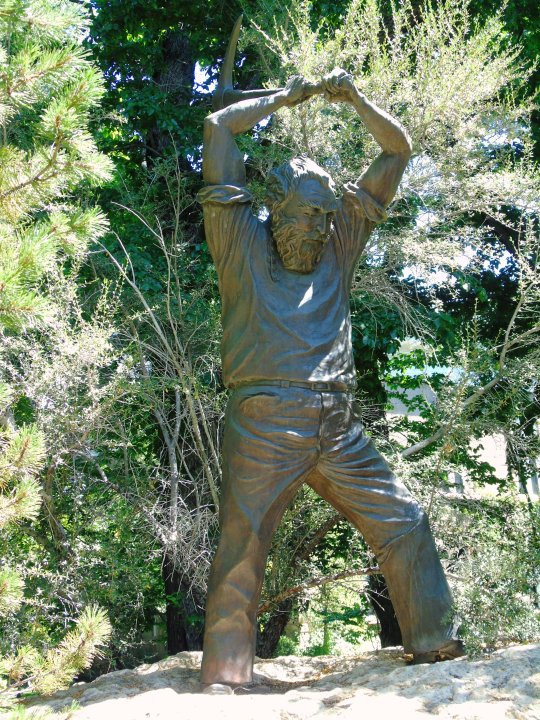
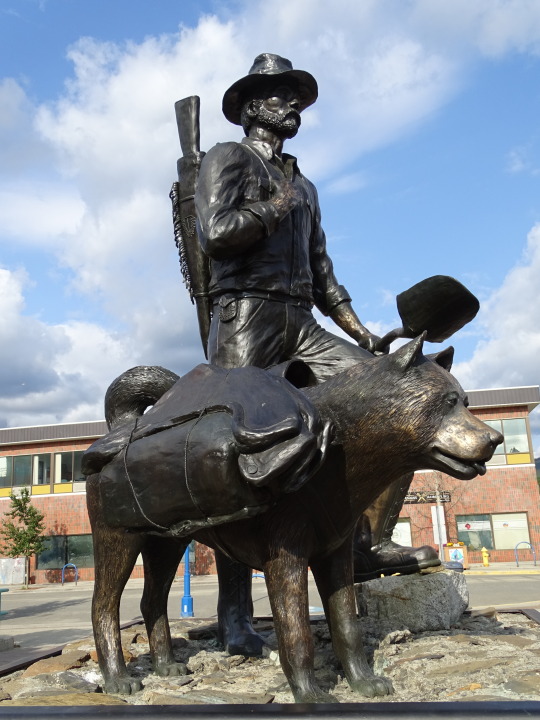
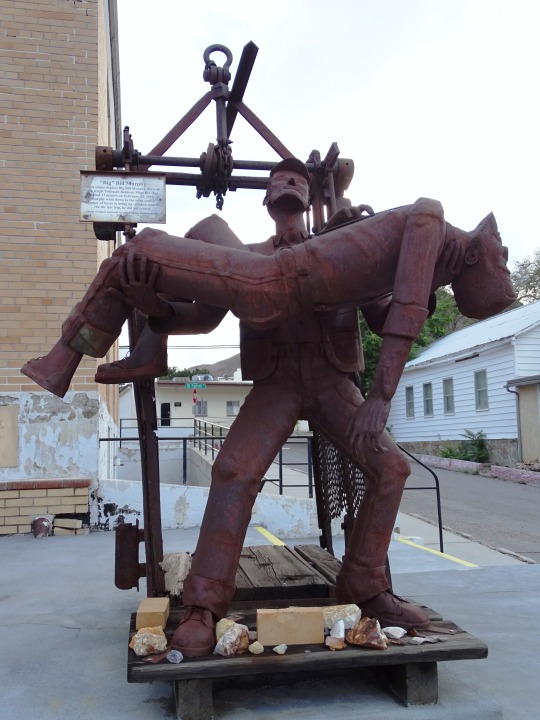




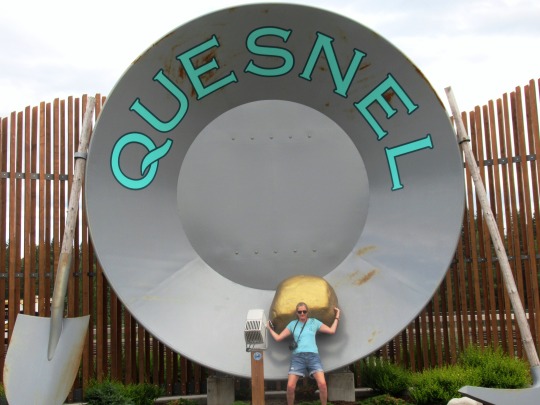
Talk Like a Grizzled Prospector Day
Talk Like a Grizzled Prospector Day commemorates the start of the California Gold Rush, which began on January 24, 1848, when James Marshall discovered gold while building a saw mill for John Sutter, near what is now Coloma, California. The day has its roots in International Talk Like a Pirate Day, and was inspired by Prospectors Day, which was once held at Knott's Berry Farm each year on January 24. It also was inspired by an episode of the Simpsons with the following exchange:
Bart: That ain't been popular since aught-six, dagnabbit. Homer: Bart, what did I tell you? Bart: No talking like a grizzled 1890's prospector, consarn it.
Common examples of characters talking like grizzled prospectors in popular culture include Dallas McKennon narrating Disneyland's Mine Train Thru Nature's Wonderland and Big Thunder Mountain, Gabby Hayes—both drunk and sober—in many Western films, Gabby Johnson in Blazing Saddles, Will Ferrell as Gus Chiggins on Saturday Night Live, and Walter Huston in The Treasure of Sierra Madre.
Prospectors first came to the Sacramento Valley after Marshall found flakes of gold in the American River near Sutter's Mill, at the base of the Sierra Nevada Mountains. At the time there were less than 1,000 non-native inhabitants in California. Newspapers began reporting the discovery of gold, and by August, 4,000 miners had descended on the area. The first people that came from outside of the territory came by boat, and arrived from Oregon, the Sandwich Islands—soon to be called the Hawaiian Islands, Mexico, Peru, China, and Chili.
In December 1848, President James K. Polk announced a report by Colonel Richard Mason which spoke of the abundance of gold in California; this prompted more prospectors to travel to the territory. Throughout 1849, thousands arrived, either traveling by sea or over land, and became known as '49ers. Mining towns popped up in the area, and with them came shops, saloons, and brothels. Many mining towns became lawless, and San Francisco became an important city in the territory. By the end of 1849, the non-native population had swelled to 100,000. The Gold Rush helped California gain statehood in 1850, and gold discovery peaked in the state in 1852. In all, more than 750,000 pounds of gold were extracted during the Gold Rush.
The implication of a grizzled prospector is of one who has stayed so long searching for gold that their hair has turned gray. Some prospectors refused to quit the profession and continued to live in the Western territories. So, when Bart Simpson mentioned a grizzled prospector from the 1890s, he was referring to a prospector that had stayed more than forty years after the Gold Rush happened, still trying to find gold, or other commodities such as silver, oil, radium, and uranium. Besides a gray beard, the stereotypical grizzled prospector had faded clothes, missing teeth, a pickaxe, and a mule. They had bouts of gold fever, and were suspicious of whoever came close to their claim.
How to Observe Talk Like a Grizzled Prospector Day
Celebrate the day talking like a grizzled prospector. Here are a few words prospectors commonly used, that you could use today:
Dadburn: to curse; e.g.: "Dadburned boll weevil done 'et my crop!"
Hornswoggle: to embarrass, disconcert, or confuse; e.g.: "I'll be hornswaggled!"
Consarn: the entirety of something, also a curse word.
Dumbfungled: all used up; e.g.: "This claim is dumbfungled! There's no gold left!"
Bonanza: a mine with lots of gold.
Borrasca: a mine with no gold.
Baby buggy: wheel barrow.
Muck: to dig with a shovel.
Powder monkey: a miner who used dynamite to make holes.
Johnny Newcome: a miner new to camp.
Blackjack and saw bosom: coffee and bacon.
Paydirt: land rich in gold.
Panned out: if they had found gold while sifting through dirt with a mining pan, then things had "panned out."
Flash in the pan: something shiny in pan that turned out to be nothing, or just a small piece of gold.
Stake a claim: claim a piece of land as your own as a place to search for gold, must stake the land with wooden stakes when you arrive.
The day could also be spent watching films such as The Treasure of Sierra Madre, or old Western films starring Gabby Hayes. A visit to the Sutter's Mill replica and the Gold Discovery and Visitor Center in Marshall Gold Discovery State Park could also be planned. The days' Facebook page could also be explored.
Source
#Miners Memorial by T.W. Seatle#Grande Cache#Prospector and his dog by Chuck Buchanan#Whitehorse#Yukon#Alberta#summer 2023#Canada#World’s Largest Gold Pan by Linden Welding#Quesnel#British Columbia#Skagway Centennial Statue by Chuck Buchanan#Alaska#Stampeder Statue by Peter Lucchetti#Gold Rush Mural by Lance Burton#Talk Like a Grizzled Prospector Day#travel#USA#NationalTalkLikeAGrizzledProspectorDay#24 January#vacation#original photography#tourist attraction#landmark#Sweden#Falun Mine#Gruvabetaren by Helge Zandén#Nevada#Carson City#Tribute to Nevada Miners by Greg Melton
1 note
·
View note